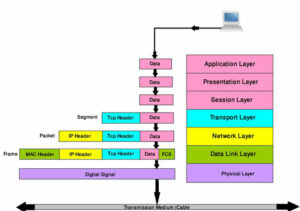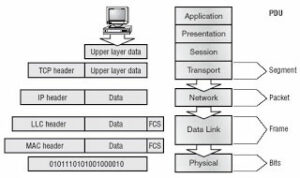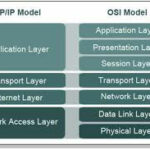 Most Common Interview Questions on OSI model :-
Most Common Interview Questions on OSI model :-
If you are looking for a network Engineer , Network Administrator or any other IT administrator job. OSI model is one the most common topic for interviewer to ask you. Today i am going to cover-up most of the interview questions related to OSI model.
(Q) What is OSI Model ?
Ans :- Check my article The OSI Model’s Seven Layers Defined and Functions Explained
(Q) What is TCP ?
Ans :- Check my article What is Transmission Control Protocol (TCP )
(Q) What is differences between TCP and UDP ?
Ans :- Check my article What is differences between TCP and UDP
https://www.youtube.com/watch?v=CkWHUpiH8l0
(Q) Which layer is responsible for converting data packets from the Data Link layer into electrical signals ?
Ans :- Physical Layer
Explanation :- The Physical layer takes frames from the Data Link Layer and encodes the 1s and 0s into a digital signal for transmission on the network medium.
(Q) At which layer is routing implemented, enabling connections and path selection between two end systems. ?
Ans :- Network Layer
Explanation :- The Network layer provides routing through an inter-network and logical addressing.
(Q) Which layer defines how data is formatted, presented, encoded,and converted for use on the network ?
Ans :- Presentation Layer
Explanation :- The Presentation layer makes sure that data is in readable format for the application layer.
(Q) Which layer is responsible for creating, managing and terminating sessions between applications ?
Ans :- Session
Explanation :- The Session layer setup, maintains, and terminates session between applications.
(Q) Which layer provides logical addressing that routers will use for path determination ?
Ans :- Network Layer
Explanation :- The Network layer provides logical addressing, typically IP addressing and routing.
(Q) Which layer specifies voltage, wire speed, and pinout cables and moves bits between devices ?
Ans :- Physical Layer
Explanation :- The Physical layer is responsible for the electrical and mechanical connections between devices.
(Q) Which layer combines bits into bytes and bytes into frames, uses MAC addressing, and provide error detection ?
Ans :- Data Link Layer
Explanation :- The Data-link layer is responsible for the framing of data packets.
(Q) Which layer is responsible for keeping the data from different applications separate on the network ?
Ans :- Session layer
Explanation :- The Session layer creates sessions between different host applications.
(Q) Which layer segments and resembles data into a data stream ?
Ans :- Transport
(Q) Which layer provides the physical transmission of the data and handless error notification, network topology, and flow control ?
Ans :- Data Link Layer
(Q) Which Layer manages device addressing, tracks the location of devices on the network, and determine the best way to move data ?
Ans :- Network layer
(Q) How Data breaks down on each layer from top to bottom ?
(Q) What is Data Encapsulation ? or Order of Encapsulation ? or Which layer is represented by frames ? Which layer is represented by segments ? Which layer is represented by Packets ? Which Layer is represented by bits ?
Ans :- Data encapsulation is the process that takes place when one host on a network needs to send data to another host. As data is prepared for transit, it flows down through each layer of the OSI model. At each layer, extra control information is added to the data before being passed to the layer below. This process continues until the data reaches the physical layer where the data is passed onto the network medium as a series of 0’s and 1’s.
(Q) DNS uses which protocol? Why?
DNS is using both TCP and UDP protocol. TCP for Zone excahnges between server and UDP when a clients is trying to resolve a hostname to an IP-address.
(Q) What are the differences between OSI and TCP/IP model?
- OSI is a reference model and TCP/IP is an implementation of OSI model.
- OSI has 7 layers whereas TCP/IP has only 4 layers The upper 3 layers of the OSI model is combined on the TCP/IP model.
- OSI has: physical layer, data link layer, network layer, transport layer, session layer, presentation layer and application layer TCP/IP has : Network layer, Internet layer, transport layer and application layer.
(Q) MAC address works on which layer ? What are the differences of MAC sublayer and LLC sublayer?
Ans :- MAC address works on data-link layer.
MAC sublayer(802.3):- defines how to transmit data on physical layer
LLC sublayer(802.2):- responsible for identifying different protocol logically & encapsulate them.
You must have knowledge of each layer to give the most of answers.
i am writing this article after collection interview questions from my friends or my own interview experience. If you have any question regarding OSI model. please pass the comment. so i will add it.
Hope you like my post.Most Common Interview Questions on OSI model. Please Share with others.
Also Check :- How to start your career as IT professional






